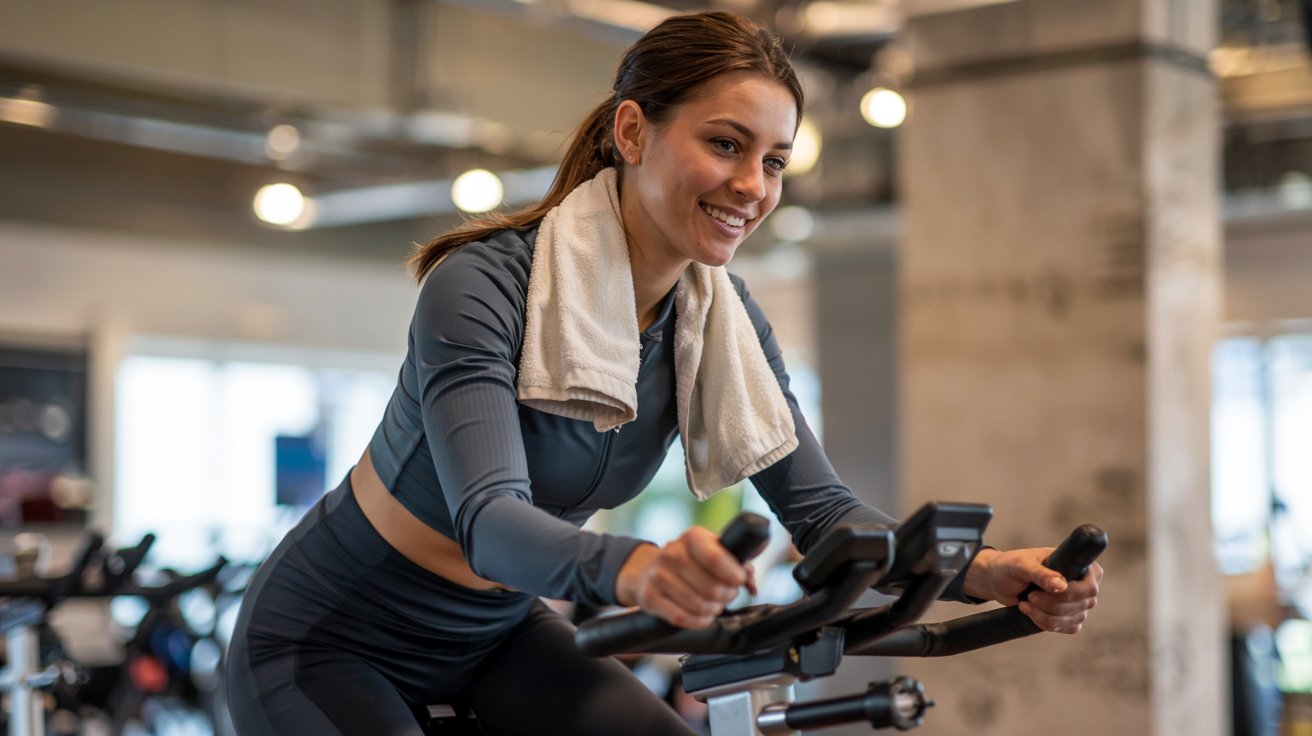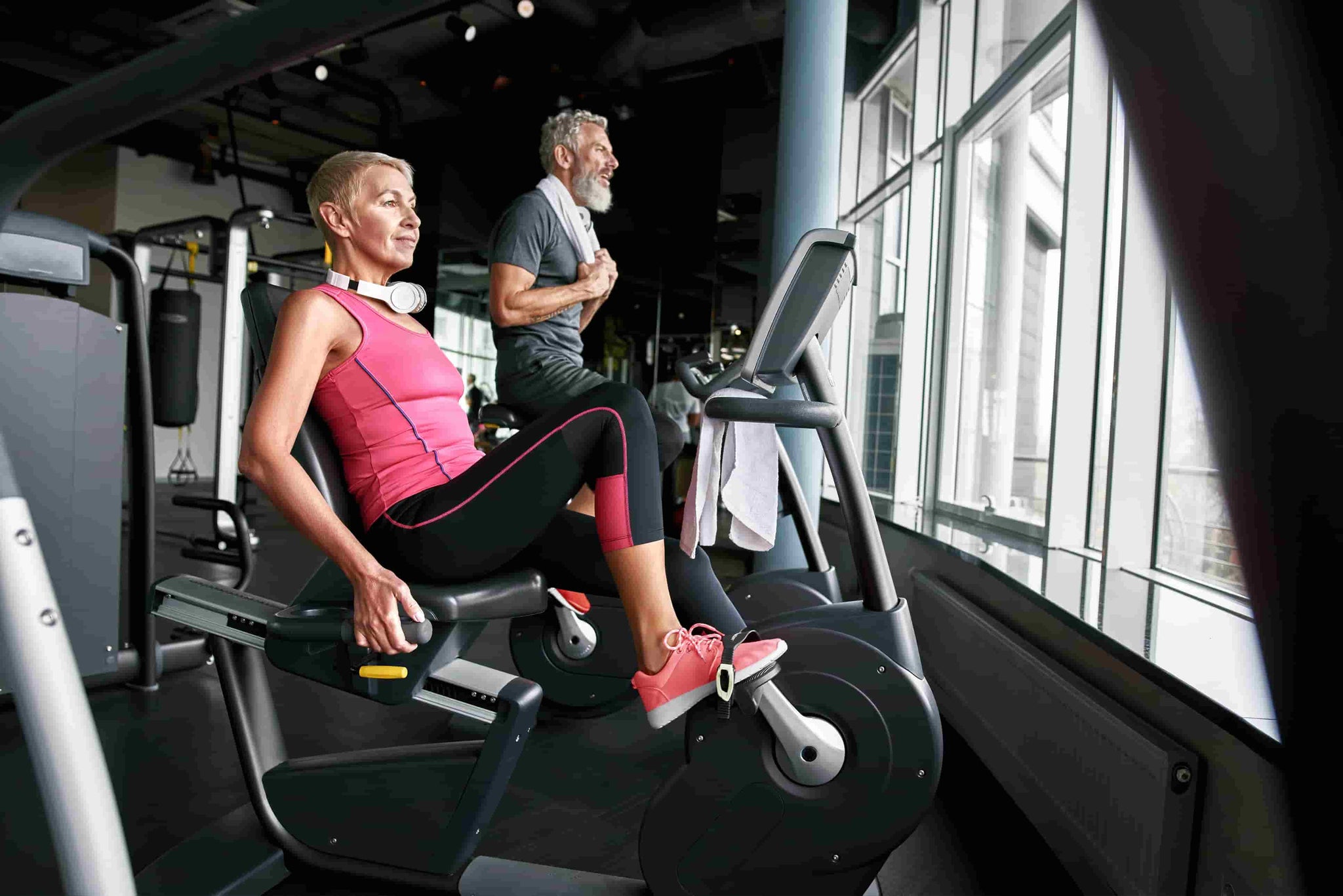Recumbent Bike vs Spin Bike: Which is better?
Written by: Vanswe Fitness
Published on: April 18, 2025. Last updated: May 13, 2025

The better bike depends on your body and your workout style. Recumbent bikes are ideal for comfort, stability, and joint protection—making them great for beginners, seniors, or anyone with back or knee issues. Spin bikes, on the other hand, are better for high-intensity training, full-body engagement, and faster calorie burn.
Both bikes are effective—it just comes down to what feels right for you. If you're looking to add a cardio machine to your home or gym routine, you’ve probably come across two popular options: the workout recumbent bike and the spin bike. While both are great for improving cardiovascular health and burning calories, they’re actually quite different in design, comfort, and workout style.
What’s the Difference Between a Recumbent Bike and a Spin Bike?
A recumbent bike leg position lets you sit in a reclined position with back support and pedals in front, while a spin bike puts you in an upright or forward-leaning position—more like riding a road bike.
| Feature | Recumbent Bike | Spin Bike |
|---|---|---|
| Body Position | ✅ Reclined seat with backrest | ⚠️ Upright or leaned-forward posture |
| Pedal Position | ✅ In front of the body | ⚠️ Directly under the body |
| Joint Impact | ✅ Low-impact on knees and hips | ⚠️ Higher joint stress, especially at high intensity |
| Comfort & Stability | ✅ Comfortable and stable—great for seniors | ⚠️ Less stable, more demanding |
| Workout Style | ✅ Gentle, steady workouts | ✅ High-intensity, calorie-burning workouts |
| Best For | ✅ Seniors, beginners | ✅ HIIT and cardio enthusiasts |
Bottom line: Recumbent bikes are built for comfort and joint support; spin bikes are built for performance and intensity.
Related Article: Recumbent Bike vs Upright Bike
What Muscles Do Recumbent and Spin Bikes Work?
Both recumbent and spin bikes primarily target the lower body muscles, but spin bikes also engage your core and upper body—especially during standing rides or weighted workouts. Recumbent bikes, on the other hand, allow you to isolate the legs more effectively in a stable, low-impact position, making them ideal for focused lower-body training without stressing the joints.
🔹 Shared Muscles Worked (Both Bikes):
- Quadriceps (front thighs)
- Hamstrings (back of thighs)
- Glutes (buttocks)
- Calves
🔹 Additional Muscles with Spin Bike:
- Core (from maintaining posture and balance)
- Upper body (when standing, leaning forward, or using dumbbells)
According to a study titled “Cycling: joint kinematics and muscle activity during differing intensities” by Holliday et al. (2019) [1], spin bikes activate more stabilizing muscles—particularly in the trunk and upper body—during higher-intensity cycling, while recumbent bikes concentrate muscle effort in the lower limbs due to the reclined posture and fixed support.
In short:
Choose a recumbent bike for a focused, low-impact leg workout. Go for a spin bike if you want full-body engagement and more muscle activation.
Related Article: What Muscles Does a Recumbent Bike Work?
Which Burns More Calories: Recumbent Bike or Spin Bike?
Spin bikes typically burn more calories per minute due to their higher intensity and full-body involvement. However, recumbent bikes are easier to sustain for longer sessions, making them a great option for steady fat-burning workouts—especially if you prefer comfort and joint support.
Here’s the comparison:
| Feature | Spin Bike | Recumbent Bike |
|---|---|---|
| Calories Burned | 🔥 600–700+ per hour | 🔥 500–600 per hour |
| Workout Style | ⚡ Short, high-intensity sessions | 🕒 Longer, lower-intensity sessions |
| Muscle Engagement | 💪 Full-body (core & upper body included) | 🦵 Lower body focus |
| Joint Impact | ⚠️ Higher impact, requires good form | ✅ Low-impact and joint-friendly |
| User Suitability | 🏋️♂️ For fit, active users | 👵 Great for beginners, seniors, recovery |
A study titled “Changes in bicycling over time associated with a new bike lane: relations with kilocalories energy expenditure and body mass index” [2] by Brown et al. (2016) highlights that even moderate, sustained cycling routines—similar to what’s done on recumbent bikes—can lead to meaningful increases in daily energy expenditure and support long-term weight management.
Bottom line:
Spin bikes are better for quick, intense calorie burn. Recumbent bikes are better for longer, low-impact rides you can do consistently—without joint strain.
Related Article: How Many Calories Do You Burn on a Recumbent Bike?
Which is Good for Knees: Recumbent Bike or Spin Bike?
Recumbent bikes are significantly gentler on your joints compared to spin bikes, making them a safer option for people with knee, hip, or lower back issues.
| Feature | Recumbent Bike | Spin Bike |
|---|---|---|
| Joint Impact | ✅ Low-impact on knees and hips | ⚠️ Higher stress, especially when standing |
| Back Support | ✅ Reclined seat with full back support | ❌ No back support |
| Safety & Stability | ✅ Very stable, low fall risk | ⚠️ Increased fall risk during intense riding |
| User Suitability | ✅ Great for seniors, beginners, injury recovery | ⚠️ Better for fit users with good mobility and balance |
In the study “Joint contact forces during semi-recumbent seated cycling” [1], Crossley et al. (2024) found that semi-recumbent cycling generates significantly lower joint contact forces in the knees compared to upright positions—supporting its use in low-impact rehabilitation and safe home exercise routines.
Similarly, “Cycling: joint kinematics and muscle activity during differing intensities” [3] by Holliday et al. (2019) highlights that the reclined cycling posture reduces mechanical loading on joints, making it more suitable for individuals with movement limitations or joint sensitivity.
In short:
If joint safety and comfort are priorities, the recumbent bike is the clear winner. It offers a stable, supportive workout with minimal risk of strain or injury.
Related Article: 8 Expert Guides: How Recumbent Bikes Help With Pain, Rehab, and Recovery
Which Bike Is More Comfortable and Accessible?
Recumbent bikes offer greater comfort and are easier to use—especially for beginners, seniors, or those with mobility issues.
🔹 Recumbent Bike:
- Wide, cushioned seat with backrest for full support
- Reclined position reduces strain on the back and neck
- Easy to get on and off—no climbing required
- Comfortable for long-duration workouts
- Great for multitasking (e.g. watching TV or reading)
🔹 Spin Bike:
- Narrow saddle may cause discomfort, especially for new users
- Upright position can strain the wrists, shoulders, or back
- Requires more balance and flexibility
- Designed for high-intensity sessions, not extended comfort
Quick takeaway:
If comfort and ease of use matter most, the recumbent bike is your best bet. And if you're searching for the most comfortable recumbent bike, look for models with full back support, adjustable seat positions, and low step-through design.
Which Bike Is Quieter and Takes Up Less Space?
Recumbent bikes are generally quieter, while spin bikes take up less space.
🔹 Recumbent Bike:
- Very quiet—ideal for home workouts without disturbing others
- Bulky frame with a longer base—requires more floor space
- Often designed with stability and comfort in mind over compactness
🔹 Spin Bike:
- May produce more noise due to flywheel resistance
- Compact footprint—fits better in small apartments or tight spaces
- Easier to move and store when not in use
In summary:
Need a whisper-quiet ride? Go for a recumbent bike. Short on space? A spin bike is the more compact choice.
Final Thoughts
Both bikes are excellent cardio options—it all comes down to what you enjoy and what your body needs. Whether you’re chasing fitness goals or just want to move more each day, the best bike is the one you’ll actually use.
So pick the one that fits your lifestyle, hop on, and ride your way to better health
Refference
- Holliday W, Theo R, Fisher J, Swart J. Cycling: joint kinematics and muscle activity during differing intensities. Sports Biomech. 2023 May;22(5):660-674. doi: 10.1080/14763141.2019.1640279. Epub 2019 Sep 2. PMID: 31475880.
- Brown BB, Tharp D, Tribby CP, Smith KR, Miller HJ, Werner CM. Changes in bicycling over time associated with a new bike lane: relations with kilocalories energy expenditure and body mass index. J Transp Health. 2016 Sep;3(3):357-365. doi: 10.1016/j.jth.2016.04.001. Epub 2016 May 4. PMID: 27672561; PMCID: PMC5034937.
- Crossley CB, Diamond LE, Saxby DJ, de Sousa A, Lloyd DG, Che Fornusek, Pizzolato C. Joint contact forces during semi-recumbent seated cycling. J Biomech. 2024 May;168:112094. doi: 10.1016/j.jbiomech.2024.112094. Epub 2024 Apr 15. PMID: 38640830.
Latest Articles






